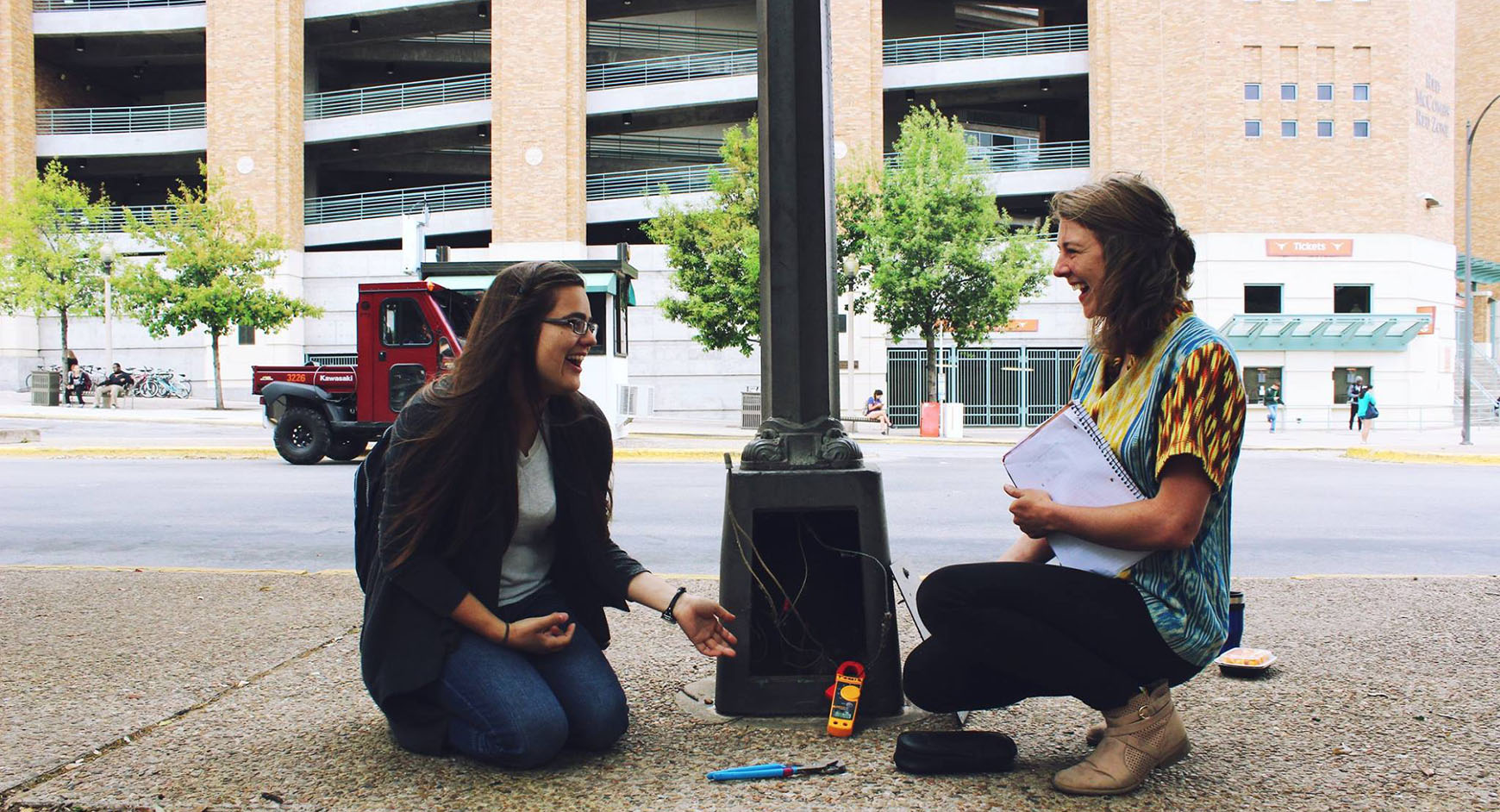Light for the sake of light does not always equal safety. And, overly bright public lighting hides the beautiful nighttime environment. These two issues caught the attention of UT Austin students Katie Litchen and Kali Miller.
What started out as freshman year group project in an environmental science field seminar turned into something bigger. Litchen and Miller immersed themselves in how to find a balance between security and a natural night sky on campus.
As the pair looked to improve energy efficiency and reduce light pollution on campus, their original proposal was to install solar-powered street lamps along Speedway from 21st Street to 24th Street. But the more research on the costs of solar energy they did, the team decided to change their idea to installing LED lights in street lamps on campus. LED lights are more energy efficient and more cost effective in the long-run than the current street lights on campus. After doing significant research for the class assignment, they turned the proposal in for a grade, but Miller also had a bigger idea.
"After completing their assignment, Kali suggested we actually submit the proposal to the Green Fee Committee,” Litchen, now a senior environmental science major recalls. The pair had no idea that this group project would turn into a multi-year sustainability initiative on campus. To their surprise, the Green Fee Committee liked their proposal and granted them $10,000 to start implementing their Dark Sky project.
Implementing the Proposal and Working with UT Energy Management
The women began working extensively with the staff at UT Utilities & Energy Management as well as the UT Energy & Water Conservation program. While the original proposal detailed retrofitting lights on Speedway, the plan evolved to only include the street lights on 23rd Street due to the construction and new design of Speedway Plaza.
With more street lights than Speedway, the 23rd Street retrofit ended up being more expensive than originally planned. The team wrote a proposal seeking additional funding from the Green Fee Committee. After the pair was granted an increase in funds to finish the project, they got back to work. They continued to work with the staff at UT Utilities & Energy Management to implement the project by working with contractors and other companies to make their proposal a reality.
Ensuring Student Safety While Decreasing Light Pollution
Litchen and Miller worked extensively with the UT administration to ensure that the new LED street lights were still meeting university standards of brightness for the safety of students on campus. While LED lights don’t emit as much light as normal bulbs, they still meet brightness standards because their light is more direct. This allows for a similar amount of light to be produced while meeting Dark Sky certification standards to decrease light pollution. Over time, LED lights are also more cost effective because they are more energy efficient and require little maintenance.
Keeping UT on the Cutting-edge
Since the university produces all of its own energy for incredibly low costs, there isn’t too much incentive for LED lights to be installed, but university energy management was so enthusiastic about the project because they continue to aim to be at the forefront of the industry in providing cutting-edge energy methods on campus.
Now that 23rd Street has been completely retrofitted with LED street lights, there is definitely a movement to begin upgrading even more areas of campus with LED lighting. Most recently, the Harry Ransom Center even upgraded some of its display lighting to LED bulbs. What started as a freshman year group project has truly evolved into a sustainability initiative that is transforming the way UT operates as a sustainable campus.

